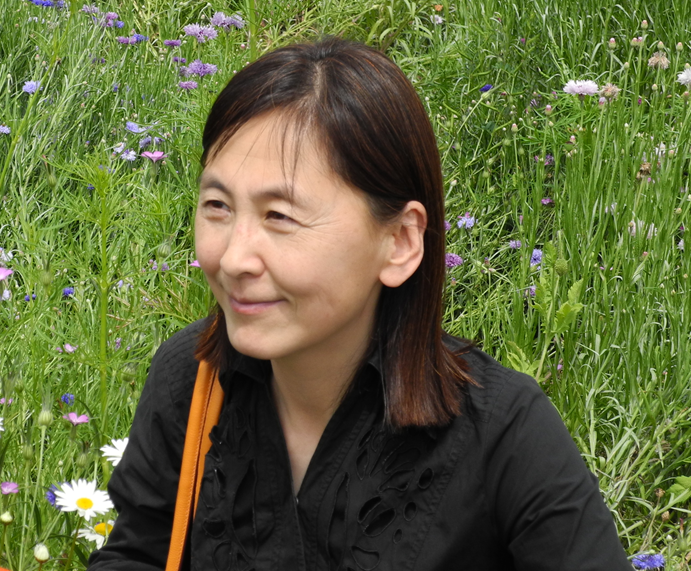- XU Fengxian

|
|
Name: XU Fengxian Research Fellow Ph.D., Professor Residence: Aug, 1994– now Departments and research group: department for the study of history of Chinese science
Education
Bachelor of Science, 1988, Department of Geography, Lanzhou University MS, 1991, Department of Agrimeteorology, Beijing Agricultural University Ph.D., 1994, Institute for the History of Natural Science, Chinese Academy of Sciences
Employment History
Dec. 2006-Present: Professor, IHNS, CAS. Oct. 2007-July 2008: Visiting Post-doctoral Research Scholar, Lehigh University, US. Oct. 1999-Nov. 2006: Associate Professor, IHNS, CAS. Oct. 1997-Sept. 1999: Postdoctoral Fellow, Institute for History, Chinese Academy of Social Sciences. Aug. 1994-Sept. 1997: Assistant Professor, IHNS, CAS Sept. 1991-July 1994: Ph.D. Student, IHNS, CAS
Research Interest/Areas
History of Chinese astronomy, Archaeoastronomy, Early Astronomy and Civilizeation
Selected Publications Books
Shangmo zhouji sipu he li yanjiu (A Study of Correspondences Between the Late Shang Sacrificial Cycle and the Calendar), Beijing: Shijie tushu Publications, 2006, 188 pp. Book Chapters Zhongguo kejishi(History of science and technology in China), Taipei: Wenjin Publication, 1997. (co-author: I wrote Chapters 1-3, pp. 1-95) Zhongguo kexue jishu shi (History of science and technology in China): tongshi juan (general history) Beijing: Kexue Publications, 2003, 979 pp. (co-author: I wrote chapters 1 and 2, pp. 1-114). Chen Meidong: Zhonguo gudai tianwenxue sixiang (Astronomical thoughts in ancient China), Zhonguo kexue jishu Publications, 2008, 480pp. I wrote Chapter 7: Xingzhan sixiang, tianren ganying shuo jiqi yingxiang (Astrological thoughts, the idea of heaven-human interaction, and their effects), pp. 414-469.
Articles
Views on abnormal celestial phenomena in ancient China. Ziran kexue shi yanjiu (Studies in the history of natural sciences), 1994, (2): 201-208 . Evolution of social effects of views on abnormal celestial phenomena in ancient China. Ziran bianzhengfa tongxun (Journal of Dialectics of Nature), 1995, (3): 21-27. Possible years for the cyclical sacrifice system of King Xin of late Shang. Ziran kexue shi yanjiu (Studies in the history of natural sciences), 2001, 20(3): 238-251. Xia-Shang-Zhou Chronology Project: Establishment of the chronological framework of the earliest three dynasties in China. In Science and Cultural Diversity: Proceedings of the XXIst International Congress of the History of Science, Volume 1 (Mexico City: Universidad Nacional Autónoma de Mexico, 2001). Paper presented at the 21st International Conference on the History of Science. Mexico City, 2001. (co-author, with Guo Zhiyu) The theory of gua-qi and na-yin in Jing Fang’s commentary on the Yijing. In Zhuixun zhonghua gudai wenming de zongji (Pursuing the traces of ancient Chinese Civilization), Shanghai: Fudan University Press, 2002: 196-203. A study of the sacrificial inscriptions about Di Xin on the bronze qinluan ding-vessel and si gui-vessel. Zhongguo lishi wenwu (Journal of the National Museum of Chinese History), 2003, (6): 7-9. The cyclical sacrificial system of King Diyi, his reign years and the beginning of the year towards the end of Shang. Ziran kexue shi yanjiu (Studies in the History of Natural Science), 2004, 23, (3): 189-205. The Ban quadripod-ding vessel and the cyclical system of late Shang. Wenwu (Cultural Relics), 2005, (9): 66-69. Research on the commensurability of the calendar dates on the late W. Zhou bronzes of the long-reigning kings bearing complete four-element dating formulas. Huaxue, No.8, 2006, 47-52. A successful cooperation of scientific expedition between China and Sweden during the last century: the Sino-Swedish scientific expedition to the north-western provinces of China(1927-1933). Ziran kexue shi yanjiu (Studies in the history of natural sciences), 2007, 26 suppl.: 1-12.(co-author, with Luo Guihuan) K. S. Hao’s plant collection in the Sino-Swedish scientific expedition to the north-western provinces of China and further research. Ziran kexue shi yanjiu (Studies in the history of natural sciences), 2007, 26 suppl.: 23-30. Exploring the origins of Chinese astronomy in the legend period from the Taosi Observatory and the pictograph unearthed from Dawenkou Culture. Zhongguo keji shi zazhi (The Chinese journal for the history of science and technology), 2010, 31 (4): 373-383. Chen Meidong(1942-2008), Historia Mathematica, 2010, 37(4): 565-567. (co-author with Yibao Xu). Using sequential relations of Day-dates to determine the temporal scope of Western Zhou lunar phase terms. Early China, 2010-2011, 33-34: 171-198. Taosi Observatory, China. In Clive Ruggles and Michel Cotte ed., Heritage Sites of Astronomy and Archaeoastronomy in the Context of the UNESCO World Heritage Convention: A Thematic Study. Published by International Council on Monuments and Sites & International Astronomical Union. 2011. pp.87-91. (co-author with He Nu). Also see: http://www.astronomicalheritage.org/images/content/astroherit/WHC-internal/ch05cs1.pdf Dengfeng Observatory, China. In Clive Ruggles and Michel Cotte ed., Heritage Sites of Astronomy and Archaeoastronomy in the Context of the UNESCO World Heritage Convention: A Thematic Study. Published by International Council on Monuments and Sites & International Astronomical Union. 2011. pp.91-96. Also see: http://www.astronomicalheritage.org/images/content/astroherit/WHC-internal/ch05cs2.pdf A new explanation on the origination of the idea of 1 cun for 1000 li for the variation rates of the sun’s shadow in ancient China. Ziran kexue shi yanjiu (Studies in the history of natural sciences), 2011, 30 (2):151-169. (co-author with He Nu).
Translations
Ye kong, Liaoning Education Publications, 2000, (co-translator, I translated page 82-179). Translated from Night Sky(Discovery channel), 1999. Zhongguo shanggu shishi jiemi: Tianwen kaoguxue yanjiu(Revealing the secrets of ancient Chinese history: Research in archaeoastronomy). Shanghai: Shanghai guji Publications, 2008, 359pp. A collective work by David W. Pankenier.
Professional Memberships
member of Commission on history of ancient and medieval astronomy, DHST member of Chinese society for the history of science and technology member of Chinese association of astronomy
Talks and Presentations
Square or Orientable? Topic presented on the International Congress of History of Science, Technology and Medicine, July 2013, Manchester.
Contact
Mailing address: Xu Fengxian Institute for the History of Natural Science, Chinese Academy of Sciences, 55 ZHONGGUANCUN East Road Beijing, 100190 China Email: xu@ihns.ac.cn Telephone: (86)13691548472 |




